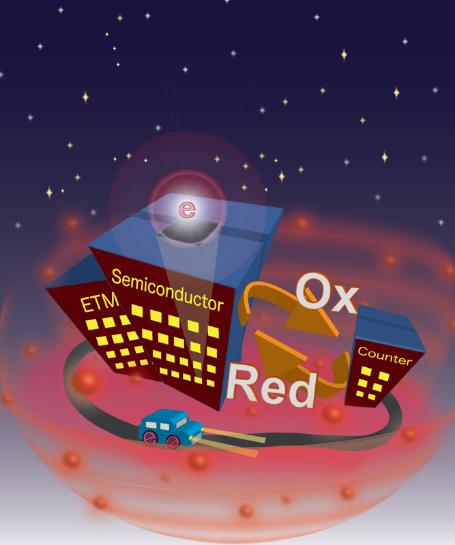
Credit: Journal of Materials Chemistry A, Sachiko Matsushita
In a world where energy consumption is on the rise, our only hope is the development of new energy-generation technologies. Although currently used renewable energy sources such as wind and solar energy have their merits, there is a gigantic, permanent, and untapped energy source quite literally under our noses: geothermal energy.
Generating electricity from geothermal energy requires devices that can somehow make use of the heat within the Earth’s crust. Recently, a team of scientists at Tokyo Tech, led by Dr. Sachiko Matsushita, have made great progress in the understanding and development of sensitized thermal cells (STCs), a kind of battery that can generate electric power at 100 °C or less.
Several methods for converting heat into electric power exist, however, their large-scale application is not feasible. For example, hot-and-cold redox batteries and devices based on the Seebeck effect are not possible to simply bury them inside a heat source and exploit them.
Dr. Matsushita’s team have previously reported the use of STCs as a new method for converting heat directly into electric power using dye-sensitized solar cells. They also replaced the dye with a semiconductor to allow the system to operate using heat instead of light. Figure 1 illustratively represents the STC, a battery that consists of three layers sandwiched between electrodes: an electron transport layer (ETM), a semiconductor layer (germanium), and a solid electrolyte layer (copper ions). In short, electrons go from a low-energy state to a high-energy state in the semiconductor by becoming thermally excited and then get transferred naturally to the ETM. Afterwards, they leave through the electrode, go through an external circuit, pass through the counter electrode, and then reach the electrolyte. Oxidation and reduction reactions involving copper ions take place at both interfaces of the electrolyte, resulting in low-energy electrons being transferred to the semiconductor layer so that the process can begin anew, thus completing an electric circuit.
However, it was not clear at that time whether such a battery could be used as a perpetual engine or if the current would stop at some point. After testing, the team observed that electricity indeed stopped flowing after a certain time and proposed a mechanism explaining this phenomenon. Basically, current stops because the redox reactions at the electrolyte layer stop owing to the relocation of the different types of copper ions. Most importantly, and also surprisingly, they found out that the battery can revert this situation itself in the presence of heat by simply opening the external circuit for some time; in other words, by using a simple switch. “With such a design, heat, usually regarded as low-quality energy, would become a great renewable energy source,” states Matsushita.
The team is very excited about their discovery because of its applicability, eco-friendliness, and potential for helping solve the global energy crisis. “There is no fear of radiation, no fear of expensive oil, no instability of power generation like when relying on the sun or the wind,” remarks Matsushita. Further refinements to this type of battery will be the aim of future research, with the hope of one day solving humanity’s energy needs without harming our planet.
###
Media Contact
Kazuhide Hasegawa
[email protected]
Related Journal Article
http://dx.




